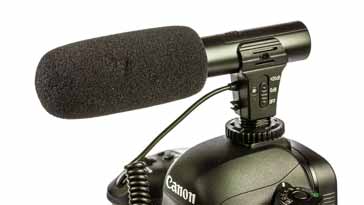How to Record Video Clips for Electronics Notes Videos
Hints, tips and ideas about recording video interviews for inclusion on the Electronics Notes YouTube channel videos
About Electronics Notes:
About ElectronicsNotes
Ian Poole
Books by Ian Poole
Advertise with ElectronicsNotes
Submitting Video Content / Interviews to ElectronicsNotes
Electronics Notes is keen to provide high quality videos which provide useful information for engineers and student of electronics related topics.
We often need to record interviews and clips remotely and as a result we have prepared a few guidelines so that the clips fall within the overall style we want to maintain.
The quality of the videos does not need to be of the quality required for movies and the like, but it should be of sufficient quality to enable
Guidelines for the content
There are naturally a few guidelines for the videos to keep them within the style and quality needed for the overall aims for the channel.
The basic ideas can be split down into a number of areas. In particular lighting and audio are very important, but there are other ideas that help make the video clips more interesting and fit the Electronics Notes style.
• Video basics
There are a few, possibly very obvious points that are associated with the way in which the video is submitted: points about the format, etc.
- Content must be unique. The video must not have been supplied anywhere else - Google monitors this.
- Music should not be used as Google checks for music and it is subject to copyright .
- The video should be HD 1920x1080 MP4 or MP4 equivalent please.
• Lighting
There are two main points associated with videos: namely lighting and the audio. Although many modern cameras and especially smartphones accommodate a considerable variation in lighting and the contrast etc. However it is always best to start with the best starting point.
- Ensure the lighting is good. A good diffused light is best. Daylight coming into a room is good, but try to keep the light a similar level in all places to cut harsh shadows.
- Try to make sure that the lighting is even over the subject and they they are sufficiently well differentiated from the background.
- Don't record with a window or other light source behind you otherwise only a silhouette will be seen.
• Audio
Audio is a really key point for videos. For an interview or contribution to a video, the audio should be crisp and clear so that the spoken words come out distinctly.
- Audio is important, so an external microphone such as a lapel mic (lavalier) or other good quality mic may be used.

- If the audio is recorded in a meeting room or similar, there can often be high levels of background noise - air conditioning and the like can give high levels of noise. These may not be too bad when played back on the device, but on other devices they may be unacceptable.
• Camera Equipment
Today there are many cameras that can be used - the quality of modern equipment is exceedingly good and a variety of types of camera can be used to great effect.
- A digital single lens reflex or similar camera can provide some really excellent quality video. DSLRs are used by many people who regularly post on YouTube and other platforms. The camera also does not need to be a top end item either - even budget cameras can provide a sufficient level of video.
- Smartphones are perfectly acceptable to use. They actually produce HD and sometimes can produce 4k video and they produce video of good quality. DSLRs and other cameras also often have good video recording capabilities, and are generally better than smartphones, although the differences may not be that noticeable.

• Other equipment
There are several other pieces of equipment that can be used, but many of them are not essential.
- The camera can be mounted on a tripod and a smartphone clamp, both obtained very cheaply from suppliers like Amazon. Even low cost ones can be more than adequate.
• Miscellaneous points
- Try to keep the camera at eye level - please try to not to look down on it as can imply a superior attitude which is not intended.
- Try to ensure that anyone being interviewed does not look at the camera - instead they should face approximately 10° away from the camera. Although it can be hard for the eprson talking not to look at the camera, it is important not to. Having someone standing by the camera, asking the question and then engaging with the anser can be a real help.
- Keep answers concise - as watchers will flip away at the drop of a hat, answers should be as concise as possible, while containing useful information to keep the viewers engaged. It is a constant battle to keep viewers interested and continuing to watch.
- Try to cut down on echo as rooms can sound very boxy. It may help to close curtains, or record in a larger room or a room with a carpet and other soft furnishings.
More hints and tips can be found on our page entitled "How to Make Videos and Vlogs."
We look forward to receiving your video and uploading it onto our Electronics Notes channel and giving you a good level of visibility.




